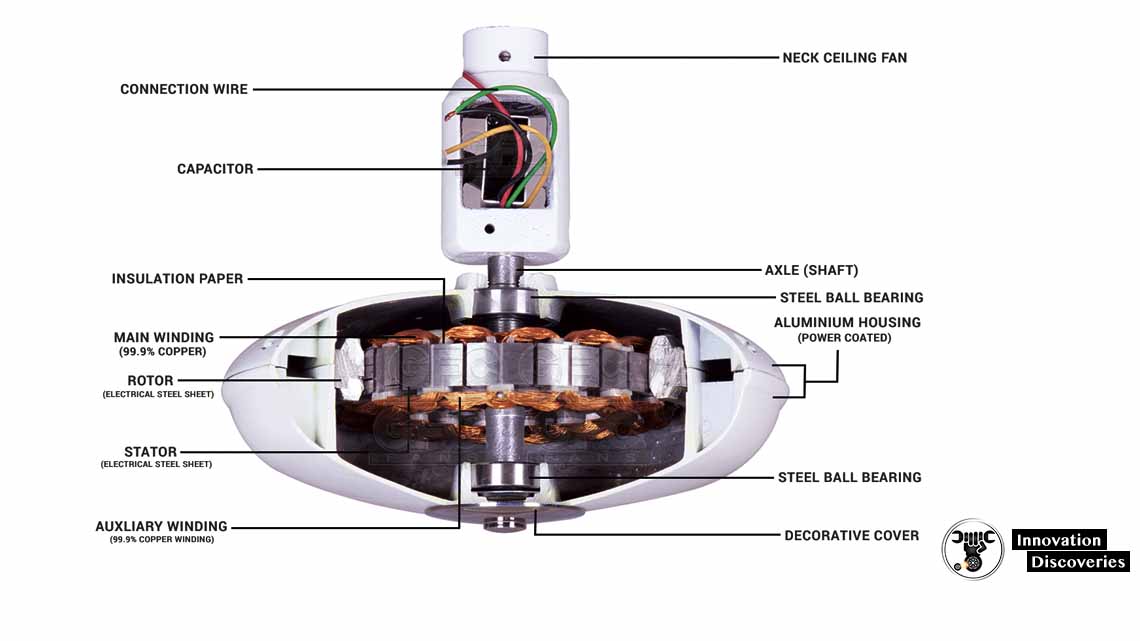The ceiling fan is the most ignored angel of our lives. We always take it for granted. Come inside the room switch it on and just ignore it. Yes, that’s what we do with our lovely ever serving ceiling fan. Jokes and philosophy apart, have any of us given a serious
Thought on how a ceiling fan works so tirelessly and efficiently.
Well, that’s what we are going to discuss today. How does a heavy-duty domestic appliance like a ceiling fan actually work?
Before we jump on to the details lets dig into the history of ceiling fans a bit.
The first generation of ceiling fans was not even powered by electricity.
Yes, you heard it right they were not powered by
Electricity but were powered by a stream of running water. These ceiling fans were rotated by using a belt-like apparatus that was moved by a water turbine. The electrically powered fan which we see
Today was invented by Philip Diehl in the year 1882.

How does the fan work?
The electric motor in the ceiling fan is the soul of this appliance.
This motor is responsible for converting the electrical energy into
Mechanical energy which moves the fan for circulating the air. A fan’s motor essentially has a capacitor and a lot of metal wire coiled to a metal base.
When the current reaches this coil a magnetic field is generated making the coil
Apparatus moves in a clockwise direction. This movement of coils is then transferred
Into the fan blades hence converting electrical energy into mechanical energy. This sums up the basic working principle of a ceiling fan.
However, there is more to a ceiling fan than just an electric motor. Let us now take a few pointers about other components that go into the making of a ceiling fan. There are certain key components of a ceiling fan which are worth mentioning here. They are
The motor:
We have discussed this one already.
The Fan Blades:
It’s the long wing-like structure integrated into the fan. Rotation of fan blades is what causes the air to circulate. Fan blades are made up of many materials like wood, MDF, plastic and metals.
Fan Blade Irons:
Also known as brackets, it’s the fixture that secures the fan blades to the motor.
Flywheel:
This is a plastic or rubber appendage that is attached to the motor body,
It is the link that connects the fan blade irons or brackets to the motor.
The inner ring of the flywheel is locked to the shaft by a lock screw,
And the blade irons on the outer rings are secured using screws. Flywheels owing to the nature of the material they are built off are prone to wear and tear. It is also prone to break down. In case the fan breakdowns because of flywheel malfunction then the entire
Fan has to be disassembled in order to repair it.
J Hook & U Bolt:
J hook also known as a claw hook is a device embedded into the ceiling. On this hook, the ceiling fan is mounted. It is often fixed with a rubber grommet to reduce a fan’s operational vibration. It also helps in keeping the balance of the fan proper. U bolt is similar to a J hook in functionality but is in the shape of U and is screwed at two places on the ceiling. A big advantage of U hook is that it will not unscrew itself by the effect of fans torque. This can actually happen in the case of a J hook.
As an end note, one should also know the fact that ceiling fans actually do not cool the air inside the room. They just circulate it hence increasing the thermodynamic efficiency of the place they are put in.

